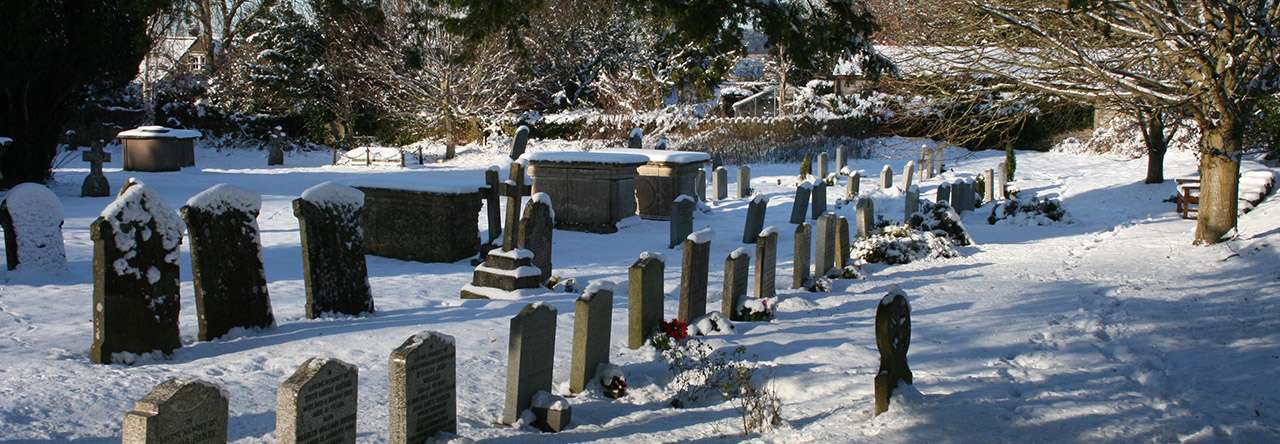From an obscure castle in Switzerland in the eleventh century the Habsburg tentacles reached out across Europe and across the centuries perpetually grasping more territories. By dint of war, election, inheritance, skilful politicking, but most of all through judicious marriage, and shored up by the almost continuous presence of a member of the House of Habsburg as Holy Roman Emperor from 1438-1806, they expanded their holdings. In 1272 the Germans elected Rudolf I as their king, and his sons became Dukes of Austria in battle. In the fifteenth century Maximilian I acquired the Netherlands through marriage to Mary of Burgundy. A particularly auspicious marriage with Joanna of Castile, combined with his sister’s marriage to Joanna’s brother, enabled Philip I to claim Spain and its colonies for his son Charles V. Under the latter Habsburg power reached its apogee in the sixteenth century. In 1521 Charles’s brother Ferdinand had married Anna, the daughter of Vladislav II , King of Bohemia and Hungary, and his sister Mary had married Vladimir’s son Louis II. The marriage contract had stipulated that Ferdinand would succeed to the Hungarian and Bohemian lands if Louis died leaving no legitimate male heir. When Louis died at the Battle of Mohacs in 1526 the territories duly passed to Habsburg rule.
To preclude rival dynasties from emulating their tactics and to secure their position the Habsburgs, when not marrying into new possessions, intermarried. But this successful strategy came at a price and their consanguineous unions brought a range of physical and mental disabilities, miscarriages, still births, neonatal deaths, and the famous Habsburg Jaw, a protruding lower jaw with a bulbous lip, and Hapsburg Nose, long with a hump and hanging tip. Between 1516 and 1700 88% of marriages in the Spanish branch of the Habsburg family were consanguineous: where most people have sixteen great great grandparents, Charles II of Spain had only nine. His mother was the niece of his father, his grandmother was also his aunt. Known as el Hechizado (the Bewitched) the poor man was short, lame, had congenital heart disease and epilepsy, suffered from depression, was impotent, and so developed was his Hapsburg Jaw that he struggled to eat and speak. Extended periods of ill health dogged his life and when he died in 1700 leaving no heirs Habsburg rule ended in Spain with a Bourbon victory in the War of Spanish Succession.
In the Austro-Hungarian territories of central and eastern Europe however the Habsburgs clung to power into the twentieth century. Maria Theresa survived potential disaster, despite the loss of Silesia to Prussia, and defended her right to inherit the rest of the Habsburg lands in the War of Austrian Succession. In 1804 Francis I, although forced to accept the demise of the Holy Roman Empire under pressure from Napoleon, declared himself instead Emperor of Austria and in 1867 established the Dual Monarchy of the Austro-Hungarian Empire with Hungary as a nominal co-equal in response to Hungarian nationalism and growing Austrian weakness. Franz Joseph’s attempt to reverse declining fortunes and increase Habsburg territory with the annexation of Bosnia-Herzegovina in 1908 however proved disastrous. Serbia, closely related geographically and ethnically to these territories, was outraged. Serbian nationalism was inflamed and in 1914 a Serbian nationalist movement the Black Hand sought the removal of Austria-Hungary from Bosnia Herzegovina and the formation of a southern Slavic state. Under their influence a group of Bosnian Serbs assassinated the Archduke Ferdinand, nephew and heir of the Emperor Franz-Joseph. Austria-Hungary responded by declaring war on Serbia and through systems of alliances Germany, France, and Britain were drawn into war. By 1918 the Empire had collapsed in defeat: the Poles, Czechs, Slovaks, and Slavs all declared their political independence; Austria and Hungary sought to determine their own future. Karl I of Austria, IV of Hungary, the grandnephew of Franz-Joseph who had succeeded him in 1916, refused to abdicate, still believing himself the rightful Emperor, but Austria and Hungary became republics, and the Habsburg Law of 1919 banished the Habsburgs until they renounced all claims to the throne. Karl went into exile in Madeira and spent his remaining years trying to restore the monarchy, making two unsuccessful attempts to regain the Hungarian throne in 1921 . At his death in 1922 his son Otto, raised by his mother to see himself as the rightful heir, became the pretender to the throne, making several attempts to promote Habsburg restoration in the 1930s. Not until 1961 did he reluctantly renounce his claim.
Given such tenacious seeking and clinging to power in life, the Hapsburg way of death did not surprise me. In the stygian gloom of the Kaisergruft, the Imperial crypt beneath the Capuchin church in Vienna, scions of the House of Habsburg lie entombed. Established under the terms of the will of Anna of Tyrol in 1617, she and her husband the Emperor Matthias were the first incumbents. Since then, they have been joined by the bones of almost 150 other Habsburgs. Before entry into this grandiose burial chamber the Habsburg organs are removed as part of the embalming process for display before the funeral. Between 1654-1878 the mortal remains were then dispersed between three separate crypts: the heart placed in a silver urn went to the Herzgruft, a burial chamber in the Augustinian church in Vienna; entrails in copper urns went to the Duke’s crypt in the catacombs of Saint Stephen’s cathedral; and the bones were first placed in a wooden coffin lined with silk, black with gold trim for rulers and red with silver trim for others, which was then enclosed in a metal coffin with two locks. One key was kept by the Capuchin guardian of the crypt and the other in the Treasury of the Hofberg Palace. The baroque metal sarcophagi in the sprawling crypt are embellished with secular emblems of power, and although there is a tradition of battering the face of the corpse to make it appear more humble in the sight of god and an elaborate ritual whereby the funeral cortege abases itself before being granted entry to the church, these bombastic tombs speak of a dynasty unwilling surrender power even in the face of death.

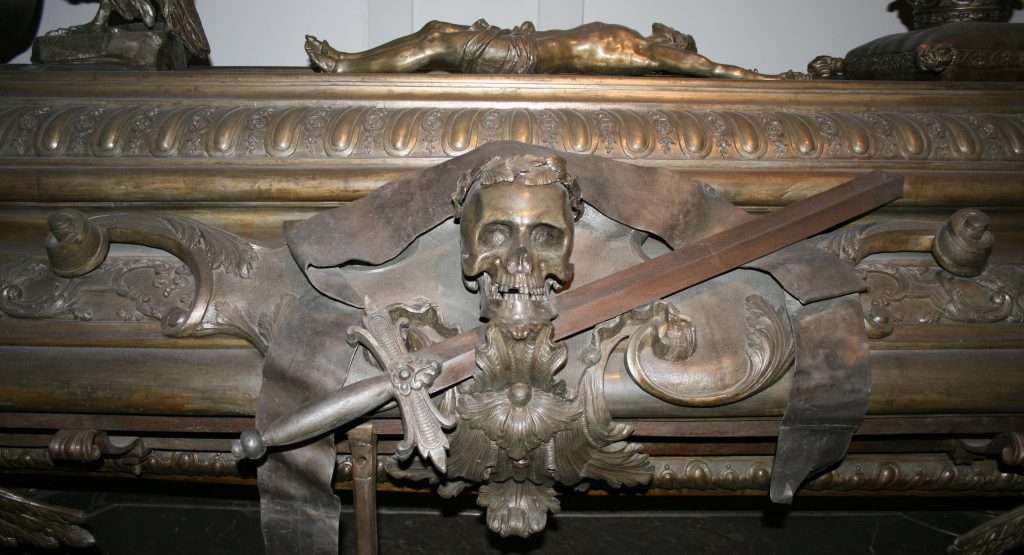
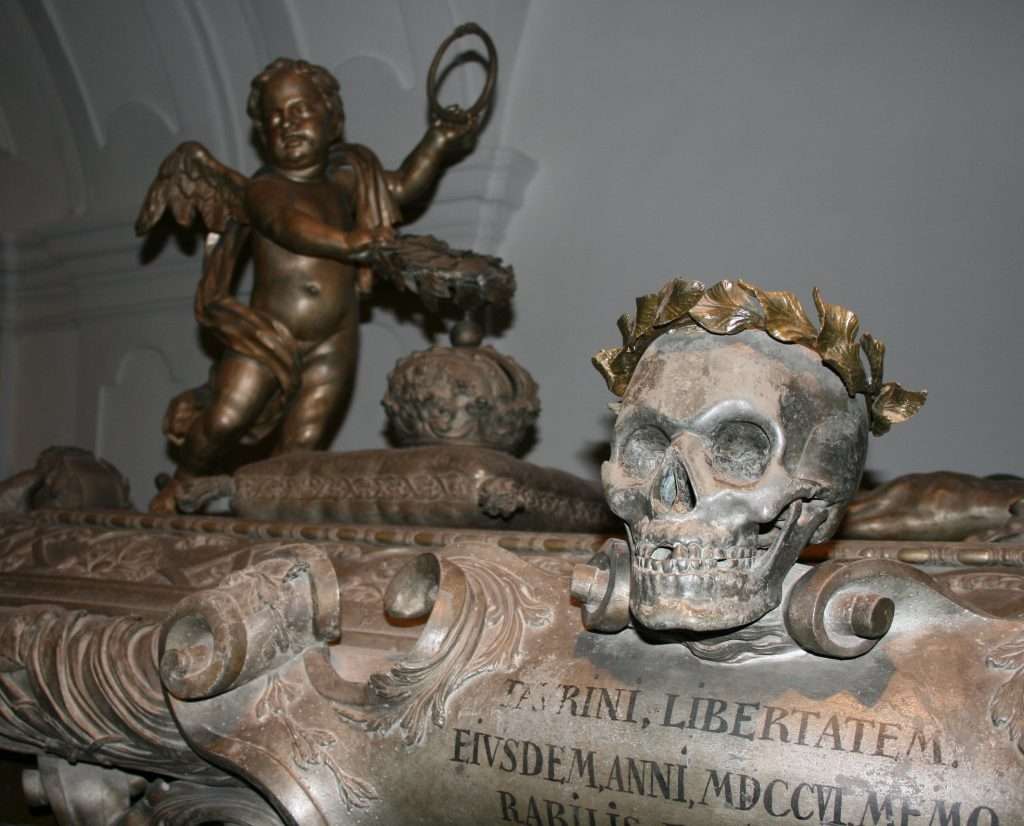
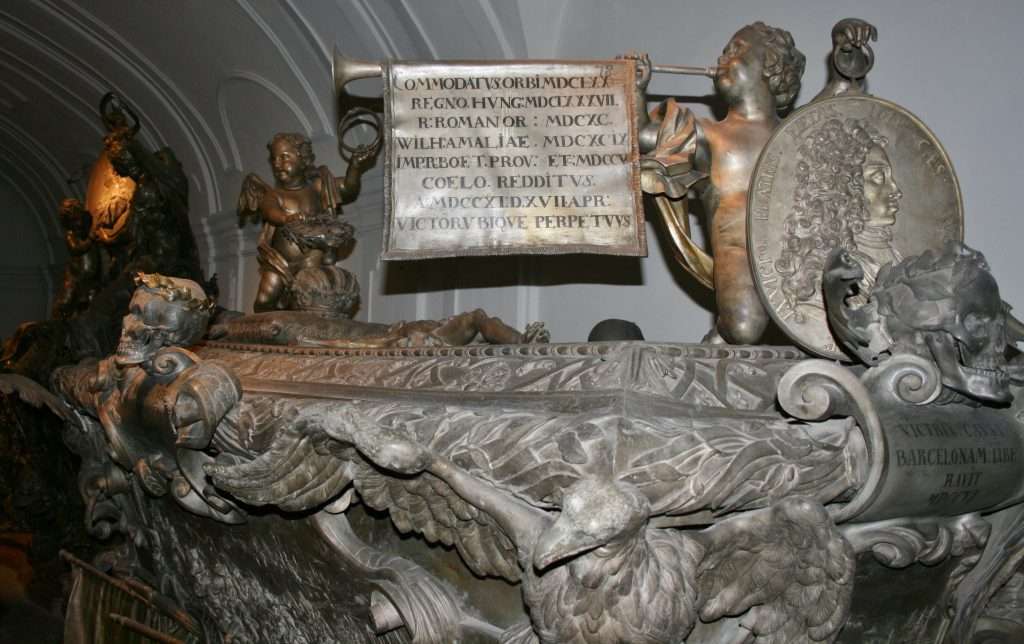


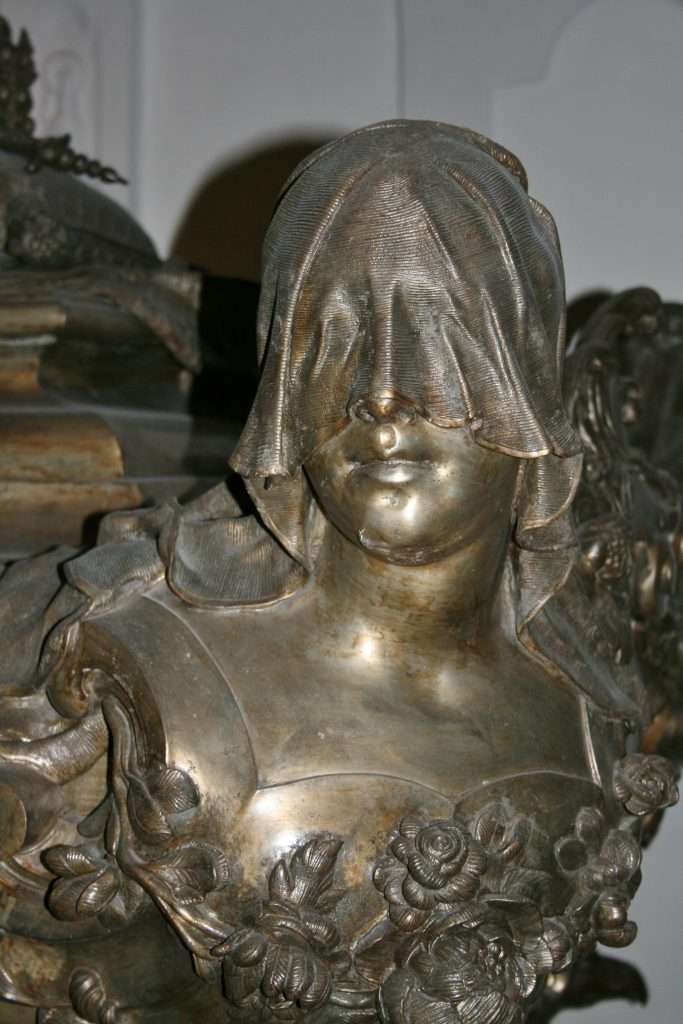

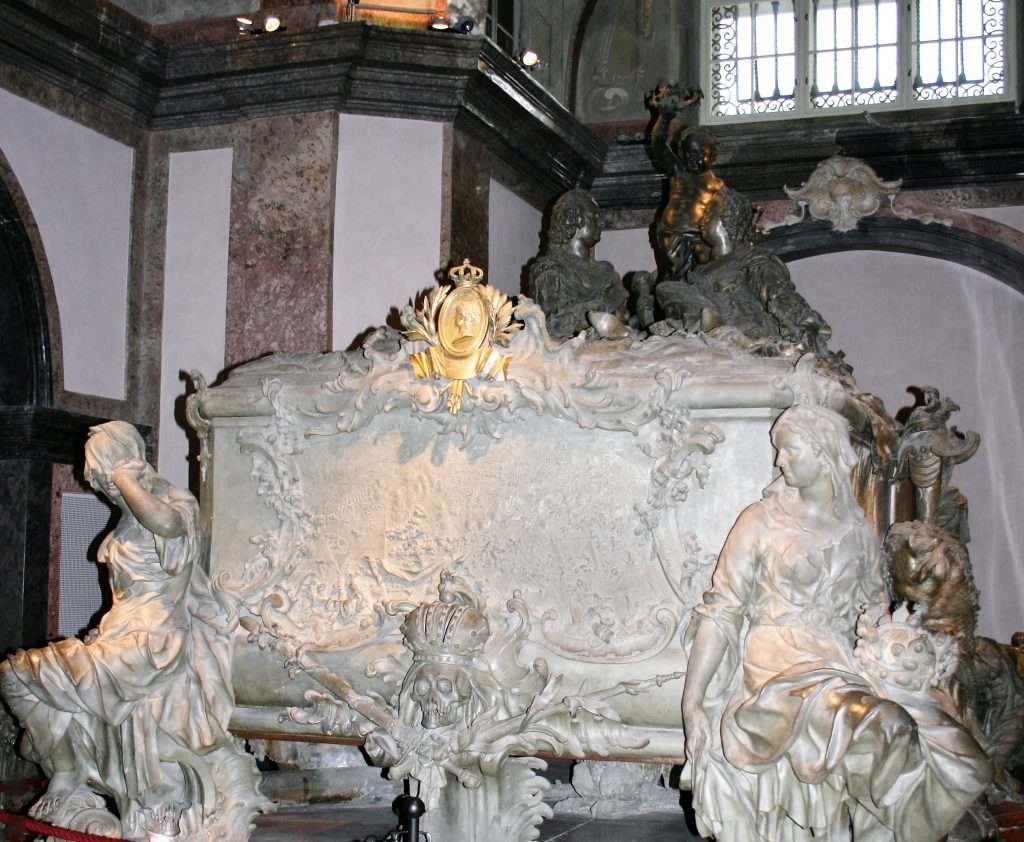
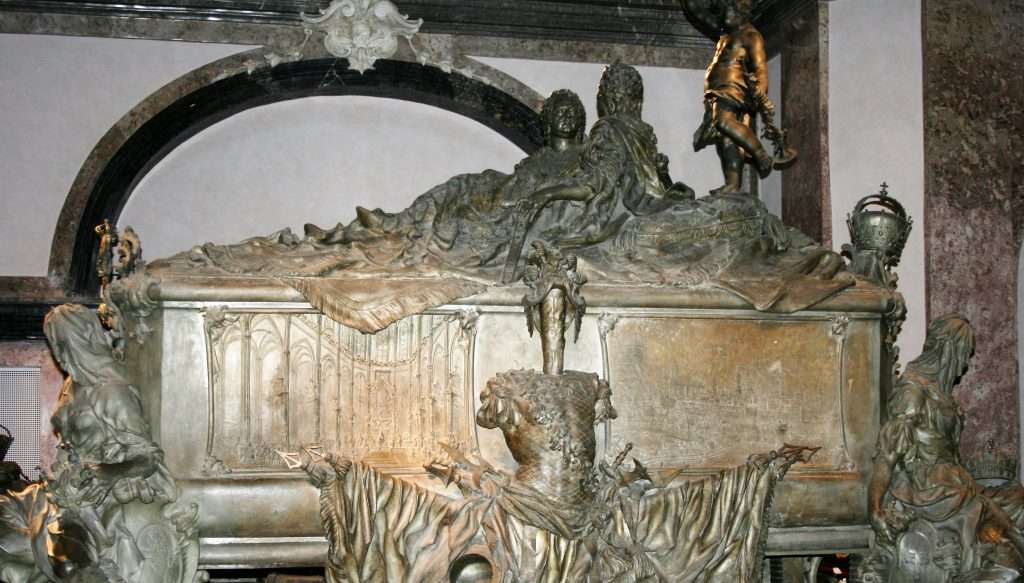
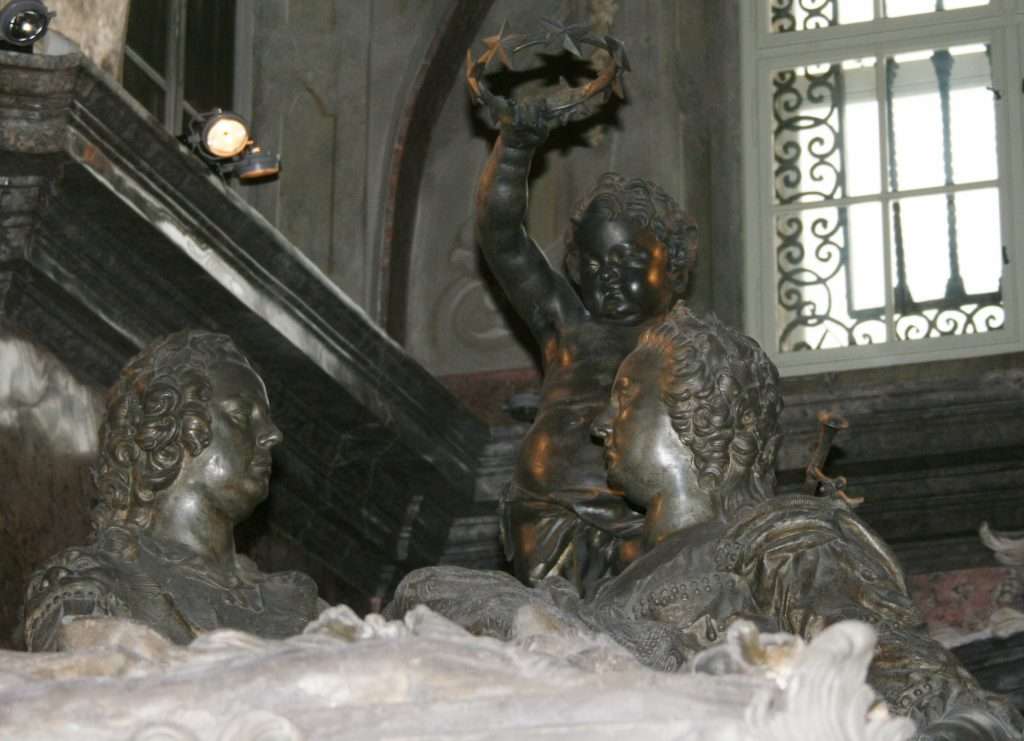
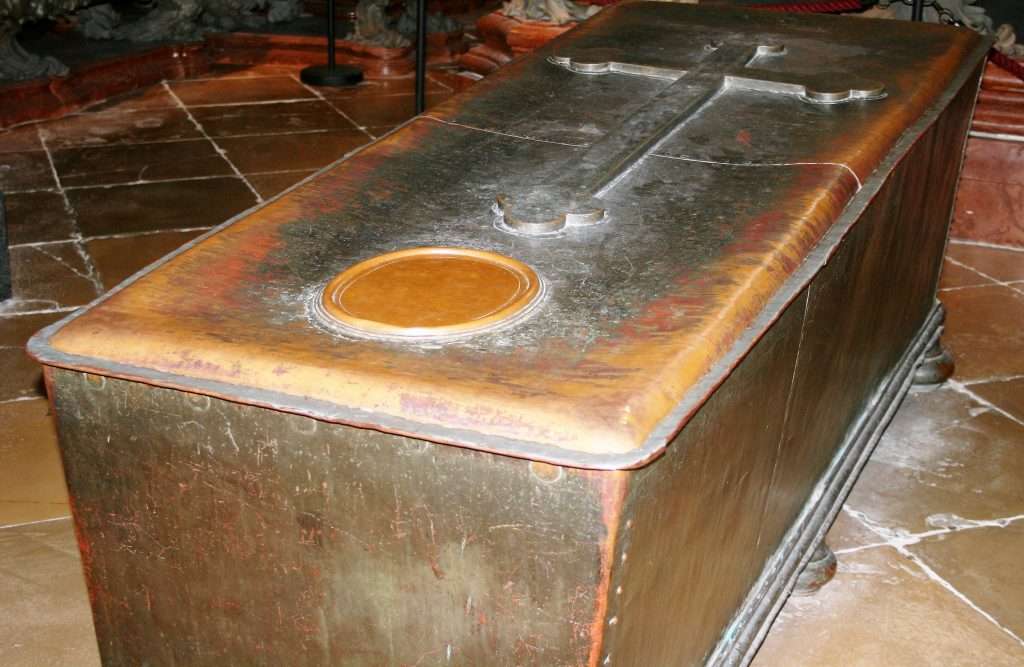
Many of his reforms met with resistance, not least his introduction of “the economy coffin” which could be reused: made of wood, it was fitted with a flap which could be opened to allow the body to drop into the grave. This carried the additional advantage that the corpse would decay more quickly and the grave could be reused. This practical measure was abandoned in the face of outraged opposition but Joseph did succeed in moving cemeteries out of town to avoid polluting ground water.
His own copper coffin is markedly plainer than those of the other Habsburgs.
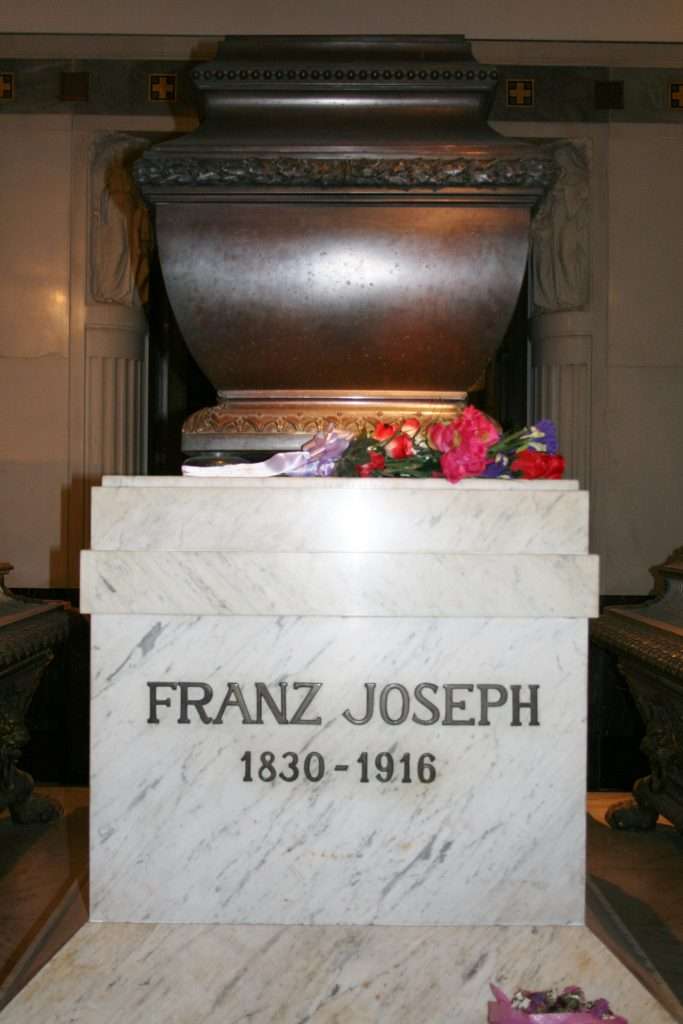
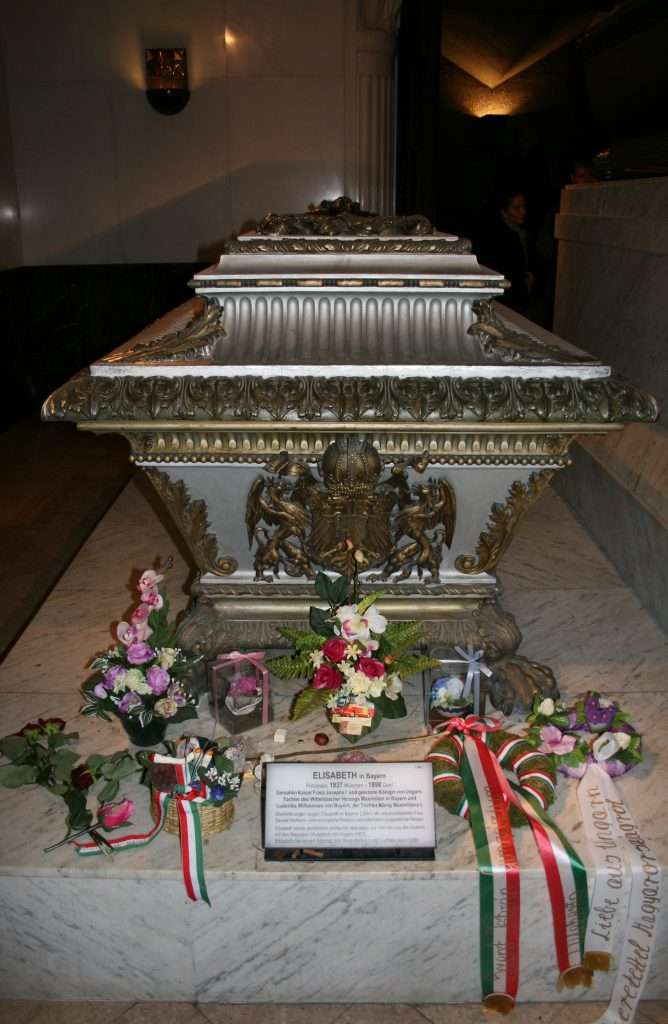
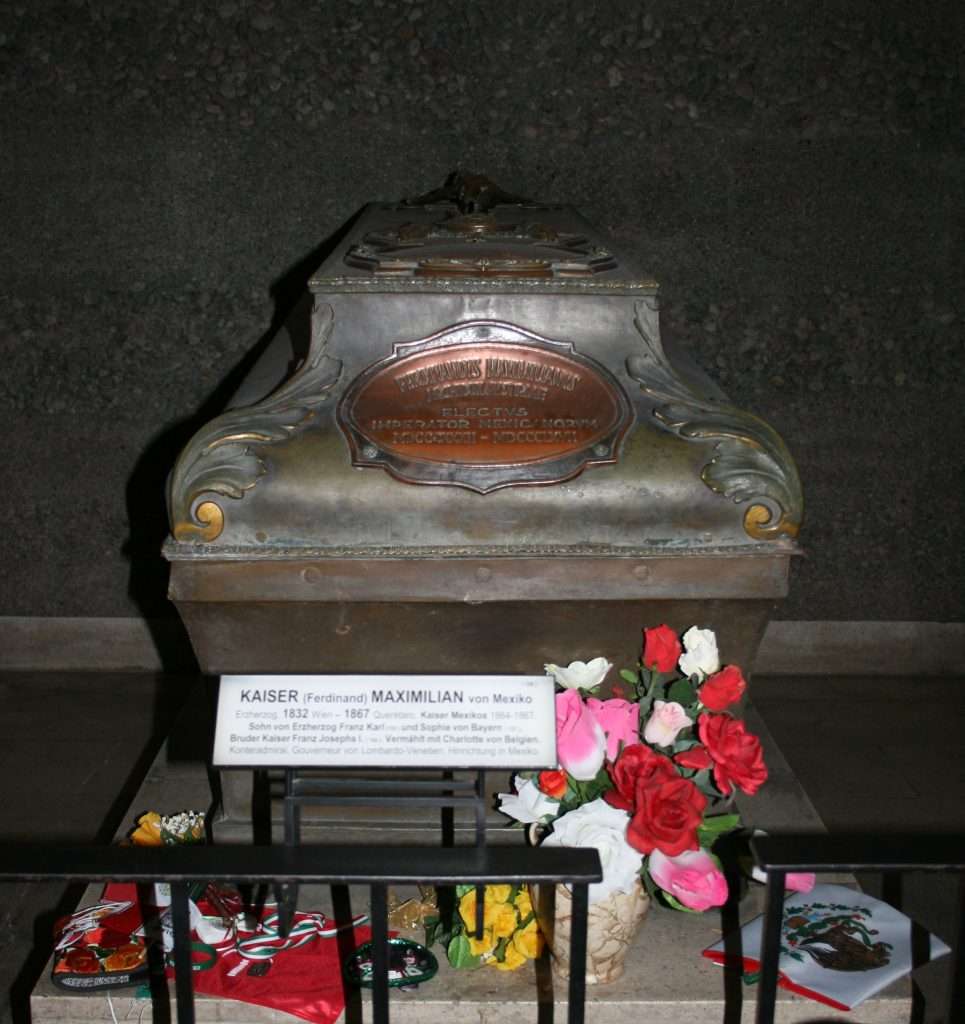
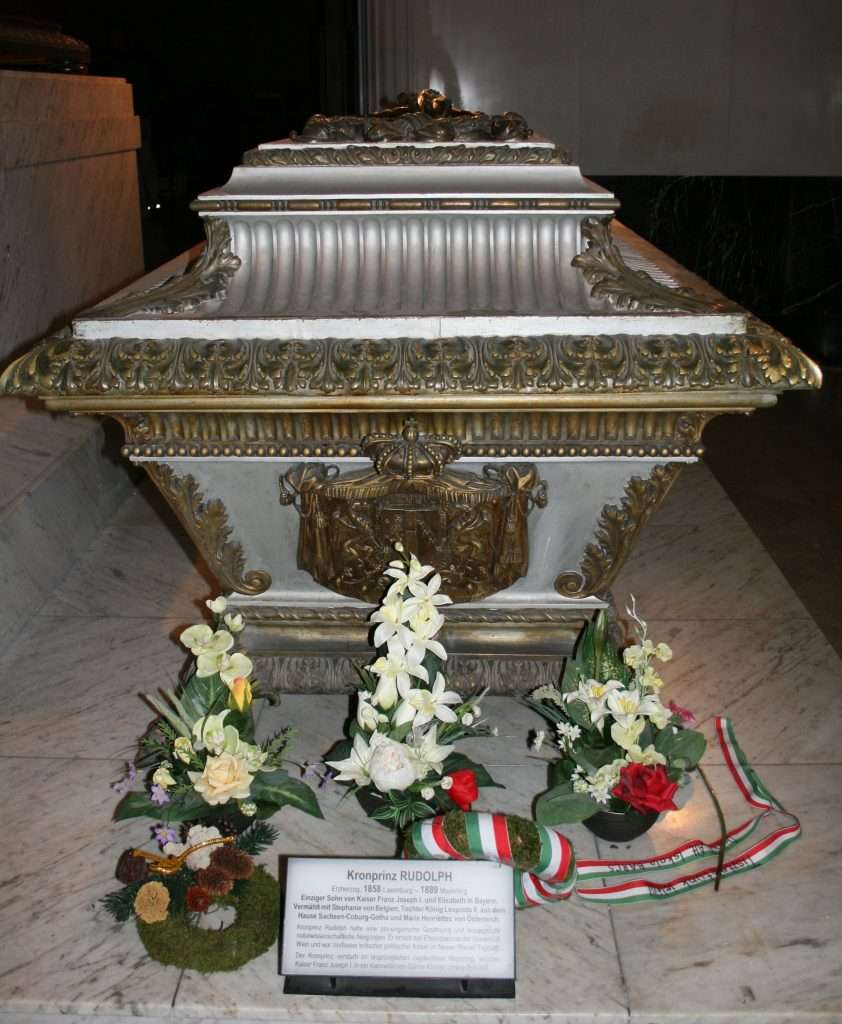
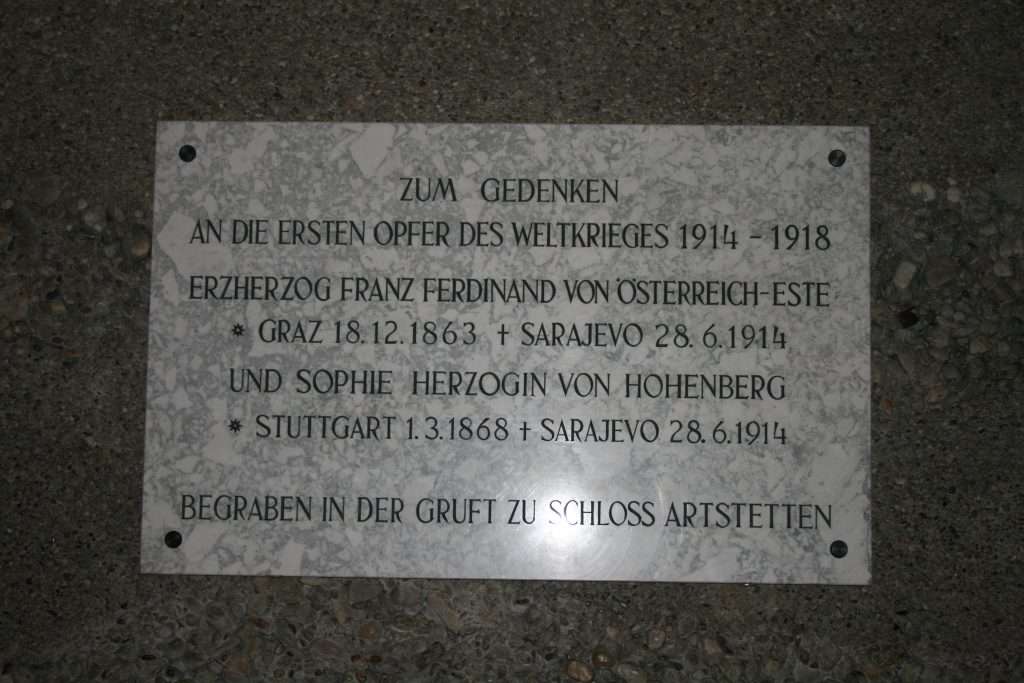
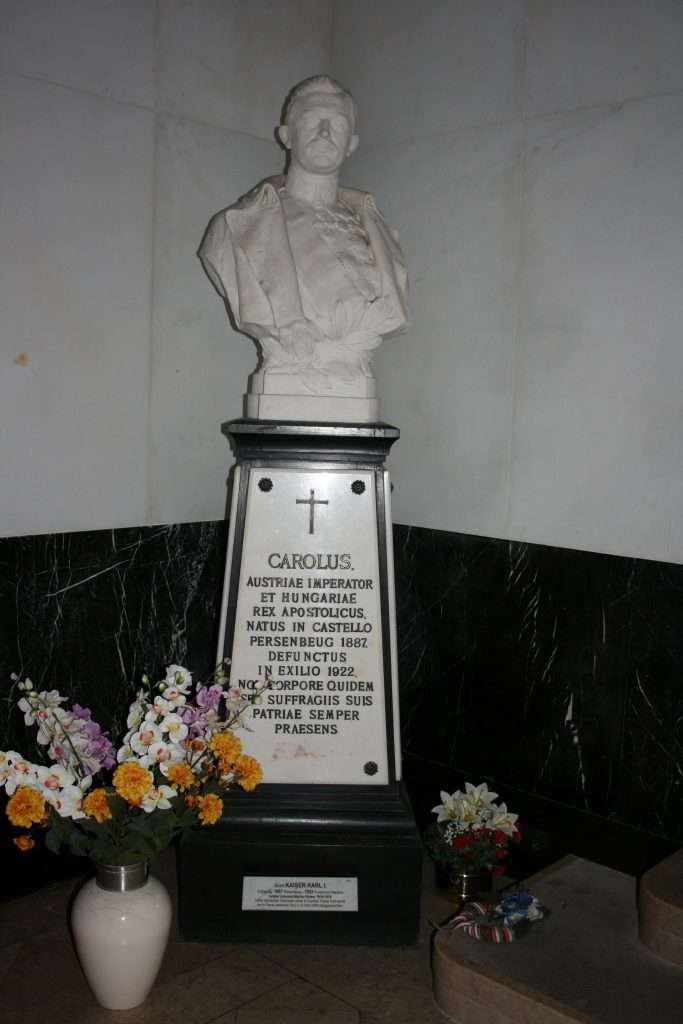

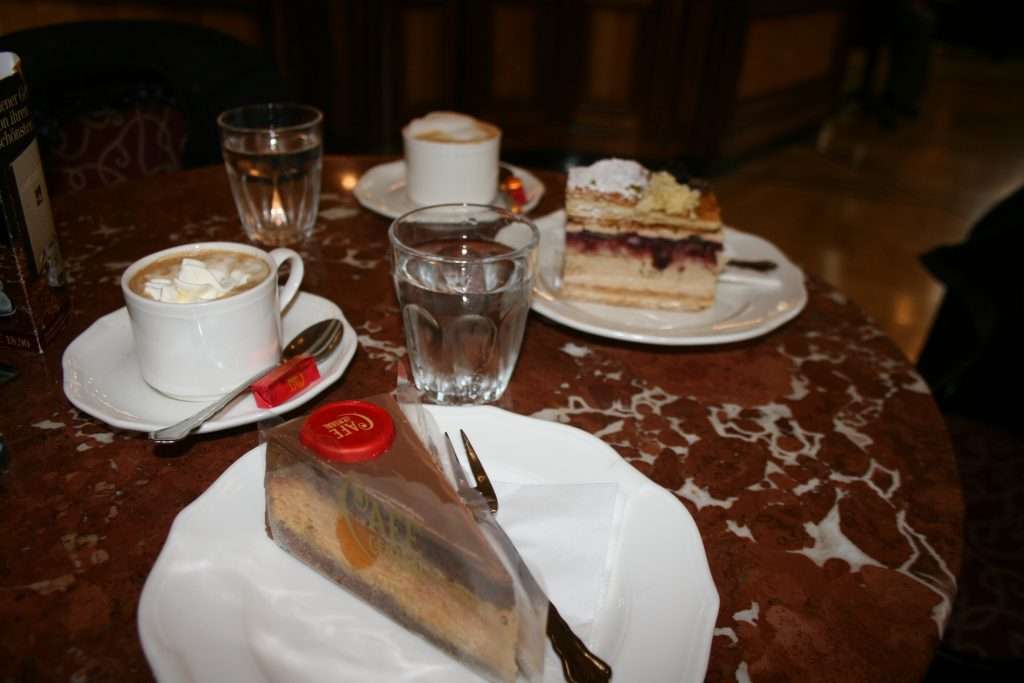
And after a morning in the company of the Austrian Habsburgs it’s time for coffee and cake in the Cafe Central.
